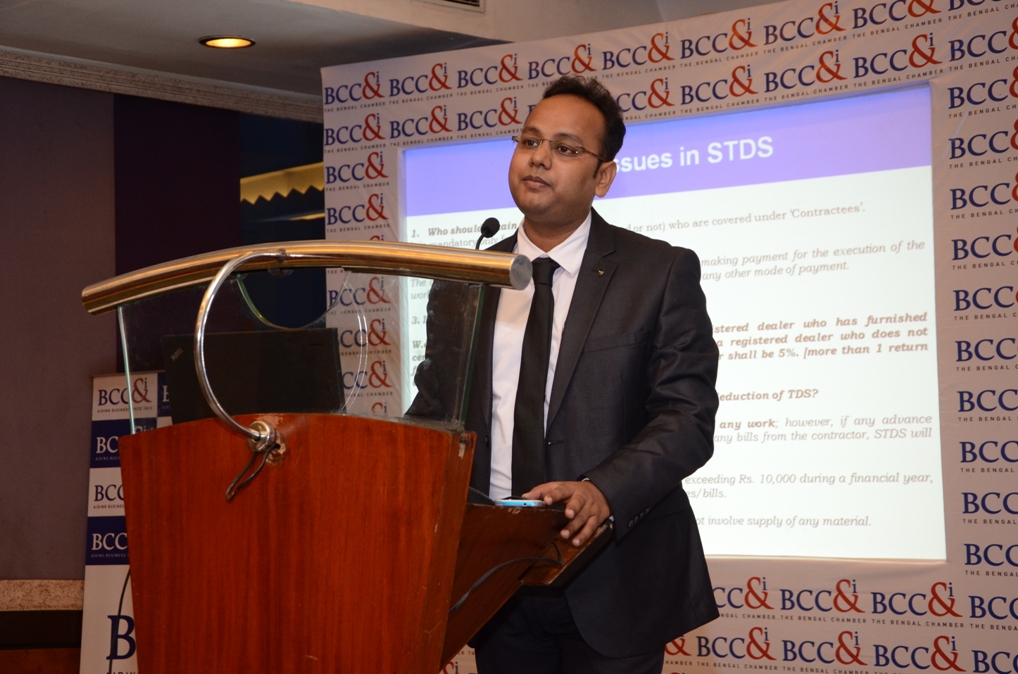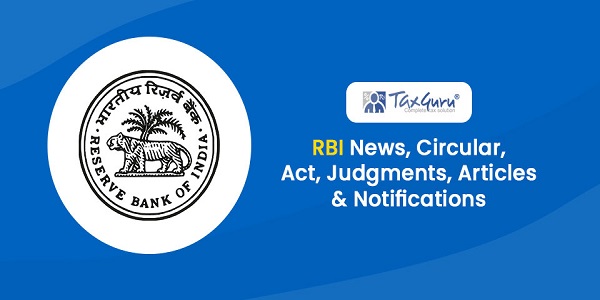Case Law Details
Rajgaria Timber Private Limited And Others Vs State Bank Of India And Others (Calcutta High Court)
BRIEF: The Hon,ble Calcutta High Court, throws light on the matter of extension of the usance period of the Letter of Credit Facility sanctioned to the writ petitioners from 180 days to 270 days.
OUR COMMENTS: The argument that the 2018 Regulations brought about a change in policy regarding the usance period for credit does not hold water, since the said Regulations and the Master Direction on External Commercial Borrowings and Trade Credits dated July 1, 2015, updated up to October 6, 2015, relate to loans extended by overseas banks. The germane consideration in the present case is, rather, the Master Direction – Import of Goods and Services dated January 1, 2016 (updated lastly on April 1, 2019).
Trade Credit Policy – Revised Framework formulated by the RBI on March 13, 2019 does not alter the position as far as the usance period available to the petitioners was concerned.
As correctly argued by the respondents, a Court order cannot impose its own view to substitute the terms of the original contract between the parties and the petitioners cannot insist upon the discretion of the bank to extend the usance period of credit to be exercised in the petitioners’ favour as a matter of right.
The petitioners shall repay the loan amount pertaining to the credit facilities obtained from the State Bank of India (represented by the respondents) in respect of the loan-in-question within 30 days from date along with interest at the rate of 6 percent per annum from the date of expiry of the credit period of 180 days post-shipment till repayment. Failure to repay the said cumulative amount (principal with interest) within 30 days from date would entail imposition of interest at the rate of 18 percent per annum which the petitioners shall pay.
FULL TEXT OF THE HIGH COURT ORDER /JUDGEMENT
1. In view of the urgency pleaded, the writ petition itself is taken up for hearing on an urgent basis via video conferencing. GA 1 of 2020 and GA 2 of 2020, being the notice of motion and urgency application are accordingly disposed of.
2. The moot question raised in the writ petition is, whether the writ petitioners are entitled to an extension of the usance period of the Letter of Credit Facility sanctioned to the writ petitioners from 180 days to 270 days.
3. As per the writ petitioners, the State Bank of India accepted the operating cycle of the company to range from 225 to 270 days and as such, the bank is bound to provide usance period of 270 days for the Letter of Credit.
4. The petitioners submit that the “Trade Credit Policy – Revised Framework” formulated by the Reserve Bank of India (RBI) on March, 13, 2019 superseded Clause B.5.1 of the Master Direction for Import of Goods and Services issued on January 1, 2016 and updated on February 2, 2018.
5. Learned counsel for the petitioners submits that the Policy of the RBI dated March 13, 2019 is based on the Foreign Exchange Management (Borrowing and Lending) Regulations, 2018. Regulation 2(xvii) of the 2018 Regulations provides that the term “Trade Credit” refers to the credits extended by the overseas supplier, banks/financial institutions for imports into India in accordance with the Trade Credit Framework decided by the RBI in consultation with the Government of India. The explanation to the said Regulation clarifies that “suppliers’ credit” relates to the credit for imports into India extended by the overseas suppliers, while “buyers’ credit” refers to loan for payment for imports into India arranged by the importer from an overseas bank or institution.
6. The petitioners seek to draw a distinction between the usance period of a Letter of Credit and the period of a Trade Credit. Learned counsel for the petitioners submits that the usance period of Trade Credit Facilities sanctioned to the petitioners was fixed in line with the extant norms of the bank in terms of operating cycle of the company.
7. The petitioners refer to Regulation 4(B)(ii) of the said Regulations to show that it specifically stipulates that Trade Credit may be raised from outside India by importers of capital or non-capital goods as permissible under the extant Foreign Trade Policy of Directorate General of Foreign Trade (DGFT) in accordance with the provisions of Schedule-II of the Foreign Exchange Management Act (FEMA), 1999. The said schedule provides for import of non-capital goods /maximum period of upto one year and linked with the operating cycle , or for a period as per the guidelines issued by the Reserve Bank from time to time for any import of any goods/for imports by any specific sector.
8. It is argued that, even before coming into force of the Regulations, Clause B.5 of the Master Directions on Import of Goods and Services of January 1, 2016 (updated on April 1, 2019) contained a provision for time-limit for settlement of import credit which specifically mentions that the remittance against import generally should be completed not later than six months; however, the period for settlement of import dues could be extended for up to three years in case of disputes and financial difficulties.
9. Clause 2(5) of the Trade Credit Policy – Revised Framework of March 13, 2019 mentions that the period of Trade Credit (T/C), reckoned from the period of shipment shall be up to one year or the operating cycle, whichever is less for non-capital goods. The same was reiterated in the Master Direction of March 26, 2019, as updated on August 8, 2019.
10. Clause 14(5) of the Master Direction also provides that the period of T/C shall be reckoned from the date of shipment and shall be up to one year or the operating cycle, whichever is less.
11. Thus, it is argued, there is no bar for the bank to allow remittance of the import dues beyond the 180 days up to a maximum period of one year or the operating cycle, whichever is less.
12. Based on the aforesaid documents, the State Bank of India, in a meeting dated September 6, 2019, confirmed its decision to compute the usance period of L/C and/or the operating cycle for 225/270 days, learned Counsel for the petitioners argues. However, the bank arbitrarily reduced the time to 180 days, thereby allegedly creating huge financial difficulties for the petitioners.
13. Two letters containing instructions from the RBI, respectively dated May 21, 2018 and August 27, 2018, relied on by the State Bank, are argued to be negated by the 2018 Regulations, which came into effect on and from December 17, 2018. The Regulations of 2018, according to the petitioners, superseded the said two letters of instructions, the former having greater statutory force compared to mere instructions of the RBI. It is argued that the respondent-bank has sought to make out a new case in the rejoinder to the banks’ supplementary affidavit, alleging that usance period under Letter of Credit and period of Trade Credit are not the same. However, the petitioners refute such difference and argue that the usance period under Letter of Credit (L/C) and Trade Credit (TC) are, in effect, the same. The former refers to the actual credit period which an importer can enjoy and the period within which payment obligations arising out of import under L/C have to be discharged and, for all effective purposes, the period of credit which importer enjoys is equivalent to the TC.
14. The petitioners further argue that the bank resorted to computation of the usance period on the basis of purported Audit reports of the company, alleging the same to be 180 days, which calculation is incorrect. Such calculation of cycle, it is submitted, is based on the cash credit facility granted to the petitioners and not on the basis of the L/C account opened at the instance of the bank being a non-fund based credit limit.
15. In any event, the petitioners argue, the aforesaid contention is an afterthought on the part of the bank. The decision communicated by the bank, taken in the meeting held on September 6, 2019, being based on statutory guidelines and regulations, stands till date and is final.
16. Learned counsel for the respondent-bank (the State Bank of India) argues that the period of usance provided for a Letter of Credit (L/C) Facility is actually a term of the contract between the parties, regarding both granting the facility and accepting the same. In the present case, it is argued that the parties had agreed that the maximum usance period for the L/C shall be 180 days, which is borne out by the Sanction Letter dated March 15, 2018. The subsequent Sanction Letter dated January 22, 2019 also specifies L/C usance period of over 120 days to be issued selectively as per the branch’s direction. The Sanction Letters were accepted by the writ petitioners, thereby entering into a concluded loan contract, which cannot be resiled from by the petitioners or substituted/modified by an order of court subsequently.
17. The respondent-bank further argues that “Trade Credit Period” is different from “úsance period” and the two have been erroneously equated by the petitioners.
18. Trade Credit, as defined in Regulation 2(xvii) of the 2018 Regulations, refers to credits extended by overseas suppliers, banks/financial institutions for imports into India in accordance with the Trade Credit Framework decided by the RBI in consultation with the Government of India. Further, Regulation 4B, Clauses (ii) and (iii) of the 2018 Regulations, read together, show that Trade Credit may be raised by importers in India only from banks situated outside India. Regulation 5A, on the other hand, would show that the banks situated in India may lend by way of Trade Credit only to borrowers outside India.
19. Learned counsel for the respondents argues that Regulation 7A and Schedule-II of the 2018 Regulations corroborate the same proposition.
20. As discussed above, the buyers’ credit and suppliers’ credit pertain respectively to banks located outside India and financial institutions in International Financial Services Centres located in India and goods located outside India.
21. Since the respondent-bank is not an overseas bank but situated in India, the above concept of Trade Credit is inapplicable to the present case, as the petitioners/importers/borrowers are also situated in India.
22. The respondents argue that since Indian importers like the writ petitioners can avail credit facilities from overseas banks at cheaper rates, such importers usually attempt to avail such credit facilities from outside India and foreign banks would not grant credit facilities to persons, who are not citizens of the countries where the said banks are situated, unless the person gets repayment of the credit facilities guaranteed by a bank of his own country having credibility. In such situation, Indian importers approach Indian banks for facilitation of availing buyers’ credit by the importer from an overseas bank. The Indian bank facilitates such process by issuing appropriate instruments to convince the overseas bank that the credit facilities rendered by it to the importer would be duly repaid. Such instruments were termed as LOC (Letter of Comfort) and LOU (Letter of Undertaking). Subsequently, after certain financial scams, issuance of LOC and LOU by Indian banks was banned by the RBI. However, they were left free to issue guarantees.
23. Thus, the respondents submit that the concept of Trade Credit, pertaining to overseas banks as far as importers are concerned, is not material to contend that usance period of the L/C facility sanctioned in favour of the writ petitioners should be at least up to the operating cycle of the company.
24. The respondent-bank further argues that even factually it was found on a scrutiny of the audited balance-sheets supplied by the writ petitioners that their operating cycles were much less than that projected to the respondent-bank, which would be evident from a letter dated December 7, 2019 issued by the respondent – bank and annexed to the supplementary affidavit filed by the writ petitioners, intimating the said fact to the writ petitioners and asking them to regularise the account at the earliest.
25. The respondents argue that the petitioners’ conduct do not entitle them to any leverage from the respondent – bank, also since the transactions through the respondent-bank during the relevant period were minimal in comparison to other members-banks of the consortium (found by the State Bank of India, Bank of Baroda and Syndicate Bank). Thus, the writ petitioners bypassed the contractual terms and as such, cannot be entitled to an extension of the usance period of L/C, let alone claim such extension as a matter of right. The respondents rely on the minutes of a meeting of the consortium held on December 9, 2019, which pointed out that the conduct of the petitioners was blameworthy. Such meetings have been annexed to the supplementary affidavit as well.
26. It is emphatically argued by the respondents that the discretion to extend the usance periods of L/C facility cannot be claimed as a matter of right by the writ petitioners but is entirely a subject of the discretion of the lender-bank. The usance period, in the present case, was decided on the basis of the agreement between the parties and the prevailing norms of the respondent-bank. All the factors, taken together, including the operating cycle and its maximum limit, were set in terms of the Master Direction – Import of Goods and Services, issued on January 1, 2016 (lastly updated on April 1, 2019).
27. Clause B.5 of the Master Direction – Import of Goods and Services, insofar as it relates to extension of the period of settlement of import dues up to three years, is an exception to the Rule that such payment has to be timely, not less than six months from the date of shipment as mentioned in the said clause itself. As such, the respondent pray that the writ petition may be dismissed with exemplary costs.
28. Upon considering the verbal submissions, written notes of arguments and materials on record produced by both sides, it is evident that the petitioners sought to equate Trade Credit with usance period, which are different concepts.
29. The Trade Credit Policy – Revised Framework of the RBI dated March 13, 2019 is based on the Foreign Exchange Management (Borrowings and Lending), Regulations, 2018. By definition, the same relates to Foreign Exchange Management. That apart, Regulation 2(xvii), as rightly pointed out by the petitioners, defines “Trade Credit” as Credits extended by the overseas suppliers/banks/financial institutions for import into India in accordance with the RBI Framework.
30. Suppliers’ credit, it is explained in the said Regulation, relates to credits for imports into India extended by overseas suppliers and buyers’ credit refers to loan for payment for imports into India arranged by importers from overseas banks or institutions.
31. Read in conjunction with Regulation 4B (ii) and (iii) of the 2018 Regulations, Regulation 2(xvii) would evidently indicate that the term “Trade Credit”, referred to repeatedly by the petitioners, is related only to credit raised by importers from overseas banks. Regulation 5A further shows that Indian banks may lend by way of Trade Credit only to overseas borrowers.
32. On the other hand, what are pertinent in the present case, regarding usance period of credit facilities, is not the Master Circular on External Commercial Borrowings and Trade Credits dated July 1, 2015, updated up to October 6, 2015 but the Master Direction – Import of Goods and Services dated January 1, 2016 (updated lastly on April 1, 2019). The former refers to Trade Credits governed by the Master Direction – External Commercial Borrowings, Trade Credits and Structured Obligations dated March 26, 2019, updated as on August 8, 2019, while remittances against import is governed by the Master Direction – Import of Goods and Services dated January 1, 2016 (updated as on April 1, 2019). Since the importers and the creditor bank are both situated in India in the present case, “Trade Credit”, as used by the petitioners, has no relevance since the same refers only to the loans obtained from overseas banks.
33. On the contrary, it is clear that the usance period of the credit facilities available to the petitioners is governed by the loan agreement between the respondent-bank and the petitioners, as borne out by the Sanction Letters dated March 15, 2018 (fixing the upper-limit of usance period for L/C to 180 days) and January 22, 2019 which also specifies the L/C usance periods over 120 days to be “issued selectively as per branch’s discretion”.
34. Hence, the petitioners create an unnecessary confusion by seeking to mix up “Trade Credit”, referring to overseas loans, with usance period, which govern the usance period of credit facilities given to importers by Indian banks. The latter, in the present case, was finally fixed by the terms of contract between the parties, found from the Sanction Letters dated March 15, 2018 and January 22, 2019, which were duly accepted by the writ petitioners. The period of 180 days was reiterated by the RBI Directions to the respondent-bank dated May 21, 2018 and August 27, 2018, which are binding on the respondent-bank in terms of Section 35A of the Banking Regulation Act, 1949. The instruction letters by the RBI were, thus, of mandatory nature as far as the respondent- bank was concerned.
35. The argument that the 2018 Regulations brought about a change in policy regarding the usance period for credit does not hold water, since the said Regulations and the Master Direction on External Commercial Borrowings and Trade Credits dated July 1, 2015, updated up to October 6, 2015, relate to loans extended by overseas banks. The germane consideration in the present case is, rather, the Master Direction – Import of Goods and Services dated January 1, 2016 (updated lastly on April 1, 2019).
36. Hence, the Trade Credit Policy – Revised Framework formulated by the RBI on March 13, 2019 does not alter the position as far as the usance period available to the petitioners was concerned.
37. The respondent – bank chose to exercise its discretion against extension of the usance period of 180 days for the Trade Credit extended to the petitioners/importers. Sufficient reasons for coming to such conclusion are reflected from the minutes of the relevant meetings of the consortium, the decision of the trade credit committee of the Bank and the report of the IEMs, as relied upon by the respondent – bank.
38. In any event, as correctly argued by the respondents, a Court order cannot impose its own view to substitute the terms of the original contract between the parties and the petitioners cannot insist upon the discretion of the bank to extend the usance period of credit to be exercised in the petitioners’ favour as a matter of right.
39. Accordingly, WPO No. 593 of 2019 is dismissed on contest without any order as to costs.
40. The petitioners shall repay the loan amount pertaining to the credit facilities obtained from the State Bank of India (represented by the respondents) in respect of the loan-in-question within 30 days from date along with interest at the rate of 6 percent per annum from the date of expiry of the credit period of 180 days post-shipment till repayment. Failure to repay the said cumulative amount (principal with interest) within 30 days from date would entail imposition of interest at the rate of 18 percent per annum which the petitioners shall pay, in the event of failure to pay the amount as directed above within the stipulated period of 30 days, on the total amount due (including interest), to be counted from the 31st day from date till repayment.
41. Urgent certified website copies of this order, if applied for, be made available to the parties upon compliance with the requisite formalities.
























